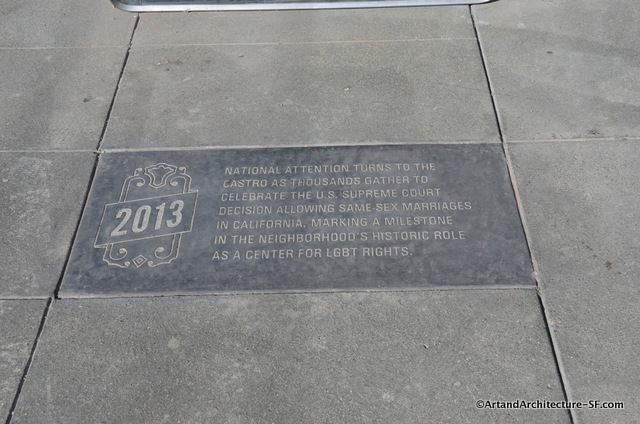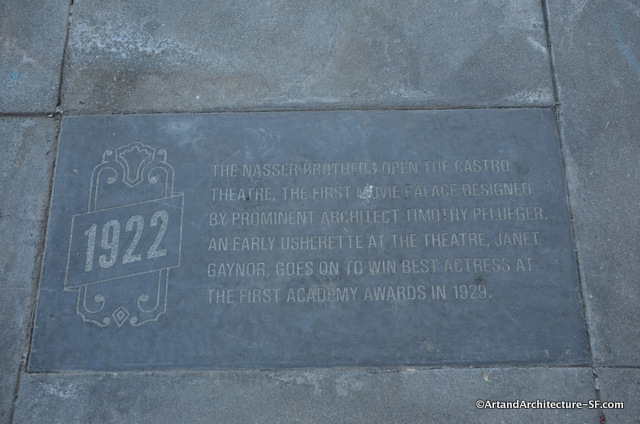Castro Street
The Castro Street Design Project was a street improvement project by the City of San Francisco that improved the cable car turn around at Market Street and Castro Street between Market and 19th. This included the fabulous rainbow cross walk you see above and historic markers placed in the sidewalk up and down Castro Street on both sides of the street for those two blocks.
The native Yelamu people lived nearby in the village of Chutchul relocating each winter to the bayside village of Sitlintac. A creek flows past grassland and chaparral toward the bay along the path of today’s 18th street.
American settler John Hohner purchases a portion of Rancho San Miguel, Castro Street, named after a prominent Mexican Era Californio Family, makes the western border of the nascent neighborhood known as Horner’s addition.
Thousands attend the first known festival on Castro Street to celebrate the groundbreaking of the Twin Peaks Tunnel. The San Francisco Chronicle declares the celebration “A riot of hilarity and merrymaking.”. The tunnel opens in 1918.
The Nasser Brothers open the Castro Theater. The first movie palace designed by Prominent architect Timothy Pflueger. An early usherette at the theatre, Janet Gaynor, goes on to win best actress at the Academy Awards in 1929.
The Sisters of Perpetual Indulgence, A queer activist and charity group founded in 1979, organize one of the world’s first AIDS related fundraisers, a dog show on Castro Street. Local resident and disco star Sylvester is one of the judges.
 National attention turns to the Castro as thousands gather to celebrate the U.S. Supreme Court decision allowing same-sex marriages in California, marking a milestone in the neighborhood’s historic role as a center for LGBT rights.
National attention turns to the Castro as thousands gather to celebrate the U.S. Supreme Court decision allowing same-sex marriages in California, marking a milestone in the neighborhood’s historic role as a center for LGBT rights.
There are many more plaques along the sidewalks, all part of the City’s improvement program.







